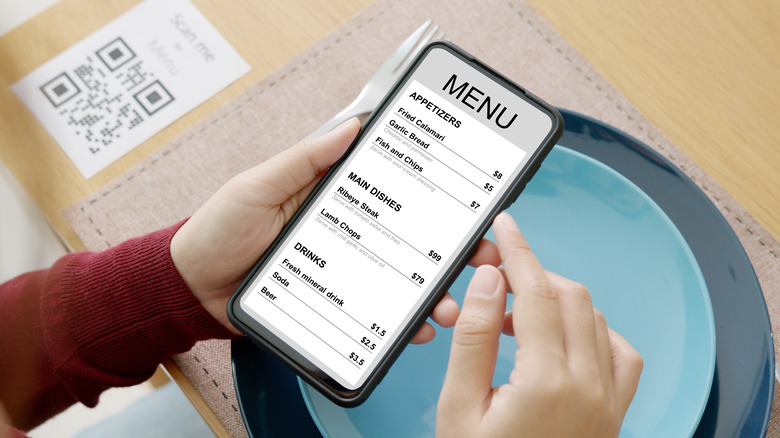How Post-Pandemic Menus Are Designed To Get You Out The Door
The pandemic altered many facets of daily life, including restaurant culture. Certain trends prevailed — and continue to hold up — when it comes to both dining in and takeout experiences. For instance, restaurant menus have evolved in a variety of ways, including, but not limited to, the widespread implementation of QR codes. Technology has become a useful tool for integrating contactless services into restaurants, while online ordering has helped restaurants meet the higher demand for delivery and takeout orders.
According to CNN, the pandemic has resulted in a new normal for restaurants, and many COVID-19-spurred changes are here to stay. Restaurants have rapidly adapted to new technologies, staffing shortages, increased health concerns, and more. Due to these pandemic-related changes, restaurants have both digitized and consolidated their menus. The latter change in particular has had major effects on restaurant culture and was designed to get customers seated efficiently ... and out the door just as efficiently.
Consolidated menus lead to faster turnover
So long, book-length menus. According to Food & Wine, the pandemic forced restaurants to space out seating arrangements, thereby reducing dining room capacity. To maximize potential profits, restaurants have changed their strategies to get as many customers in — then out — as quickly as possible.
To bring this plan to fruition, restaurants have started to shrink their menus and design simpler dishes. Forbes predicted the longevity of shortened menus back in 2021, noting that restaurants would keep their menus consolidated, yet creative. Such streamlined offerings allow restaurant kitchens to put food on the table in a timely manner without sacrificing the quality of their dishes.
"With limited seating capacity at restaurants, the turnaround time of a table is top of mind, so we have engineered the menu to be a one-and-a-half to two-hour experience," New York City-based chef Shaun Hergatt told Food & Wine.
Changing the length of menus not only enhances the customer experience — who doesn't want their food quickly? — but it minimizes the potential for exposure to sickness. Likewise, a consolidated menu makes cooking easier from the kitchen side, resulting in a better experience for everyone involved.

